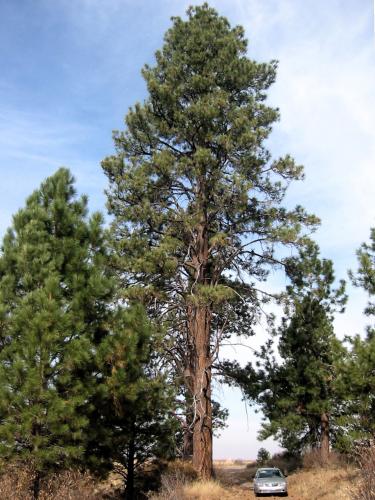Checklist: Do You Have A Fire-Resilient Forest?
Print out this checklist and take it with you on your next hike. Do you see any of these fire risks in your forest? If so, check out our content on thinning, pruning and dealing with woody debris for techniques to make your forest more fire resilient.
• Ladder fuel: Do you have small trees that form a “ladder” from the ground to the canopy?
In many lower-elevation forests, smaller trees can easily catch on fire and act as a “ladder” carrying the fire up into the crowns of the big trees. This means that a low-intensity ground fire can quickly develop into an uncontrollable wildfire. Learn more about pruning.
• Dense vegetation: Is your forest overcrowded? Do you have a lot of smaller, dead or downed trees crowding the forest floor?
Overly dense forests at lower elevations can leave a forest normally accustomed to high-frequency and low-severity fires at risk of unnaturally severe fire. Learn more about thinning.
• No defensible space around your home: Do you have 100 feet of defensible space around your home?
The first 30 feet should be cleared of dead and highly flammable plants. The remaining 70 feet can have trees and shrubs, but they should be spaced out. Also, remove branches that hang over your roof and keep dead branches 10 feet away from your chimney.
• Lack of fire breaks: Fire breaks, areas with very little vegetation, can help to slow the spread of fires.
Your forest should have a network of firebreaks, both natural and man-made. Make use of existing features, such as logging roads, streams and fields when possible. To be effective, and depending on terrain features, firebreaks should:
- Be at least 10 to 12 feet wide (wider in hazardous areas)
- Have no abrupt change in direction
- Be free from overhanging brush that may carry fire across the break
Different forest types evolved to respond to fire in different ways, from lower-elevation park-like stands to naturally dense forests at higher elevations. Always consult with a forester about your forest type first.
How can I get more tips?
It’s simple! Enter your email below.

